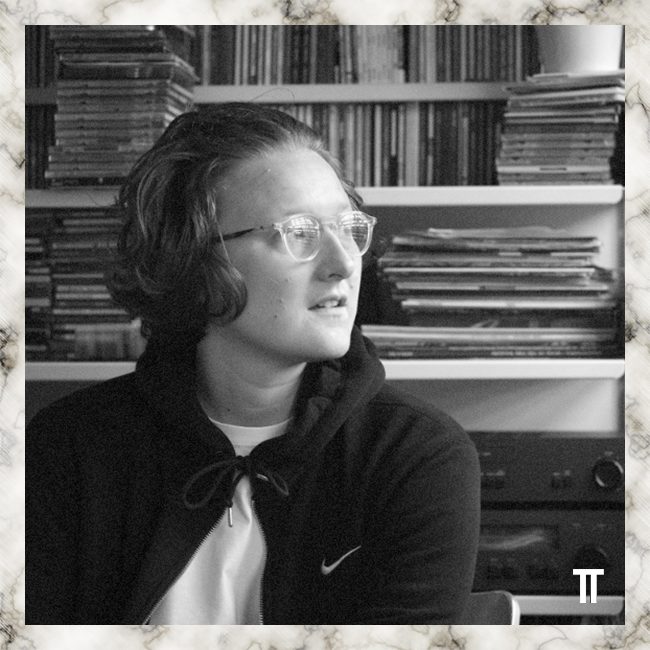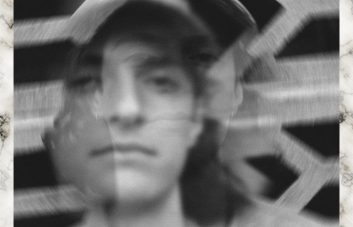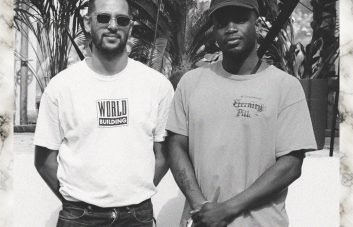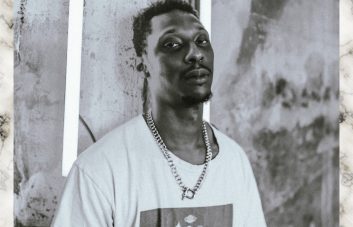The London-born and based artist Beatrice Dillon first came to our attention with her Folkways 2 release on Will Bankhead’s buy-on-sight label The Trilogy Tapes. As well as that project, she has released an impressive number of works ranging from experimental solo and collaborative compositions, musical pieces for art installations as well as soundtracking films. Her mix for the consistently brilliant Blowing Up The Workshop series is a great example of her unique and broad tastes, and we cannot recommend Beatrice’s shows on Resonance FM highly enough.
We had the pleasure of speaking with Beatrice over email about her musical background, past, current and future projects, her music-making process and creating compositions for different contexts. She also provided us with our 99th Truancy Volume, a mix of typically wide-ranging and fascinating sounds that provides a taste for her impeccable crate-digging and selection skills.
Stream: Beatrice Dillon – Folkways 2 (clip) (The Trilogy Tapes)
What was the idea behind this mix and how did you go about selecting the music for it? “I knew I wanted to include “Reshadub” and I suppose that set the mood, there’s stuff on here I’ve liked for a while and new things that have been listening to.”
What is your musical background? When developing an interest in music, were there any formative artists or labels? “My older brother was really into music so I copied him and then found my own path. I was never particularly into teenage-indie music and later during college I got into buying country, reggae and soul stuff. Those big singers like Donny Hathaway, James Carr, Toussaint MacColl, Percy Sledge. I still love that music, it’s very powerful.”
On your Soundcloud I came across your album with Rupert Clervaux, Studies I-XVII for Samplers and Percussion. Could you perhaps talk about the record, the inspirations for it, the recording process and any whether you have any future plans for the pieces? “It’s a record of seventeen pieces for percussion instruments and samples of those instruments. We just started by doing things like pitching down a xylophone and balafon to the point of abstraction, playback through a snare, shifting on beat/offbeats, what happens when you remove that 4/4 anchor.. We had rules like each piece should be under two minutes with no other instrumentation, melodies/effects at a minimum, etc. I suppose some of it might be a kind of mock of ethnographic records, too. We wanted to use the computer in a basic way, so none of it is looped or built on the grid to a click. In that respect, it’s kind of a remixers nightmare! Having said that… Karen Gwyer and Rene Audiard will be reworking them and it will be amazing to hear their interpretations. The LP will be released in autumn this year on the US label- Snow Dog and we are working on a live/DJ set.”
This album is not the first time that the two of you have collaborated. How did the two of you start making music together and how the collaborative process between you works? “Collaboration between us is very natural. He has a love of literature and I of visual art and music is where we meet down the middle. There’s usually quite a lot of talking and filter coffee involved. He masters a lot of records for improvised / free music and so it’s nice to be played different things whilst he’s mixing them. We have quite different technical skills with a lot of taste overlap so it’s a good combination.”
You also have a cassette due for release on Where To Now? soon. What sort of record is it – is it in the vein of a mixtape like your Trilogy Tapes release, or your own compositions? “This will be my own stuff, there are some other things in the pipeline later this year. It’s quite hard making music when you love it so much.”
You have created a very wide range of different music projects, as well as doing a radio. How do the different facets of your music making or “curating” interact, if they do? “Seems natural to me that all these things should feed off each other. I love reading those hardwax descriptions ‘…big room DJ tool‘ or ‘…fine tripping DJ tool‘ – the idea of a DJ set being hundreds of rhythms or ideas sewn together, just a different pair of hands handling that collage each time. It’s easier than ever to discover music and make your own collages now which can only be a good thing.”
The artwork for your releases, which I am most familiar with – the Trilogy Tapes cassette and the Blowing Up the Workshop mix, is quite striking. How do you choose artwork for your projects? Do you make any visual art yourself? “The artwork for my Blowing Up The Workshop mix was done by Matthew Kent who (as well as running BUTW) is an artist. He sent me the image of the monk playing the pipe organ with the bright yellow wash and I really liked it. Folkways 2 uses a slanted photo I took of some of my LPs on my floor at home.” Continuing from the previous question, am I right in thinking that the visual aspect of a record is quite important to you? Are there any specific labels whose art direction you especially like? “Tons.. Jack Goldstein’s Suite of 7 inches, the brilliant weird illustrations and lettering on things like Fat Eyes, Mentally Disturbed, etc. the shiny futuristic sleeves of the Prospective 21e siècle series more recently Frauke Stegmans work for Treader, PAN’s beautiful delicate sleeves, the span of ideas from The Trilogy Tapes. I know I must’ve missed a ton of great music over the years by being put off by the cover! There is also a blog I follow called bracebrace which though not especially dedicated to music, is wild.”
All of your mixes which I have heard contain lots of music which is completely new to me, so I imagine that you must discover lots of new music all the time. In the last several months have you found anything that particularly wowed you? Either an artist or single piece, or perhaps even an entire (sub-) genre of music which you found or that finally clicked? “I’ve really enjoyed Rene Audiard and Düve (Blank Slate/ Supply) also Keith Hudson. I had Michael Talbot Affair on a Blood and Fire comp and always loved it and was familiar – without realising – with lots of his productions stuff for Ken Boothe, but I’d but never bothered to investigate his weirder solo stuff until very recently. Darkest Night on a Wet Looking Road, Man From Shooters Hill or My Nocturne are just so atmospheric and incredible, Flesh of My Skin Blood of My Blood is probably what I’ve listened to most in the past 2 years. I’ve bought that CD three times for people like an evangelist!There is a brilliant interview he did with David Rodigan you can stream online.”
Stream: Beatrice Dillon – The Brilliant And The Dark B-Sides Remix (Live at Cafe OTO)
Do you have a preferred way of finding new music? Any favourite record shops or particularly special record shop finds? “I’ve tried to quell that urge a bit! Though I do still go to record shopping a few times a month. There have been many finds that have been important in bargain boxes or car boot sales or things I’ve been given. There used to be a store in South London in someone’s front room called These Records that had some stunning things. It was fun going to Gramophone and Dusty Groove for the first time last year.”
In 2011 you contributed a score to Claire Hooper’s film Eris, and previously you soundtracked NYX by the same director. In writing an original score for a piece of film, did you find the process to be significantly different from when you compose for an art installation or your own project, and if so in what way(s)? “I love making soundtracks, I love the set framework, having to produce in such specific parameters in contrast to how I go about making my own music. Working with Claire was great – we have a very trusting working relationship and I’m very familiar with her sensibilities and ideas. We adapted it for the ICA with a choir, which pushed it into another direction.”
Have you ever considered releasing pieces, which you wrote for an art project (such as the ADA installation or ‘Two Changes’) or the aforementioned film scores as standalone works, or would you rather have them be experienced in that original context? Do you think they could work outside of those specific accompanying images or art objects/spaces? “I would love to release “Two Changes”, I hired a 3-octave vibraphone for the piece, which Rupert played – it sounded incredible reverberating in the swimming pool. A 12” of “Ada” is due for release later this year.”
Beatrice Dillon’s release on Where To Now? is out in July and can be previewed here along with other interesting material from the label, while ‘Studies I-XVII for Samplers and Percussion with Rupert Clervaux is due for release on Snow Dog this Fall.
Truancy Volume 99: Beatrice Dillon by TRUANTS
Tracklisting:
Ricardo Villalobos / Max Loderbauer – Reshadub
Beatrice Dillon – 34
D. Hansen – Dialogues
Junes – Shaman Dance
Rupert Clervaux and Beatrice Dillon – Studies #10
Phork – Unknown Unknowns
Deadbeat – Peace and Love
Phantom Band – Phantom Drums
Soul Syndicate – Now You’re Gone
Morgan Buckley – Heavy Traffic
Afriqua – AEIOU
Ernst Jandl – Longing
Photo credit: Anne Tetzlaff




